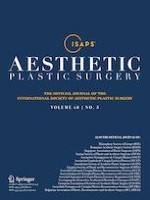Published in:

26-12-2023 | Rhinoplasty | Original Articles
Comparison of Polypropylene and Polydioxanone in the Hemitransdomal Suture: A Novel Rabbit Ear Cartilage Model
Authors:
Ayhan Işık Erdal, Serhat Şibar, Duygu Şibar, Gökhan Doğan, Süheyla Esra Özkoçer
Published in:
Aesthetic Plastic Surgery
|
Issue 5/2024
Login to get access
Abstract
Background
Lower lateral cartilage reshaping is one of the basic steps in rhinoplasty. Hemitransdomal suture is frequently used for dome narrowing. Different suture materials can be used for hemitransdomal suture. In this study, we investigated the effectiveness of polypropylene and polydioxanone in hemitransdomal suture by designing a new experimental model in the rabbit ear cartilage.
Methods
Twelve young adult male New Zealand White rabbits were used. The bipedicled inverted-U-shaped cartilage was elevated in each ear of the rabbits. Two hemitransdomal sutures were applied using 5-0 polypropylene on one ear and 5-0 polydioxanone on the other ear randomly. A 5 mm high cartilage mound was created with two hemitransdomal sutures on each side. The sample size was twelve both in the polypropylene group and the polydioxanone group (n = 12). All animals were sacrificed after three months. Cartilage mound heights were measured. The samples were examined histologically regarding fibroadipose tissue, inflammation, foreign body granuloma, cartilage degeneration, and the presence of inclusion cyst.
Results
Cartilage mound height was significantly higher in the polypropylene group than in the polydioxanone group at the end of the third month [3.75 mm (± 0.68) vs. 3.03 mm (± 0.69); p < 0.05]. There was no significant difference between the two groups in histological analysis (p > 0.05).
Conclusions
Polypropylene suture may be more effective in maintaining the shape given to the dome by hemitransdomal sutures in rhinoplasty.
No Level Assigned This journal requires that authors assign a level of evidence to each submission to which Evidence-Based Medicine rankings are applicable. This excludes Review Articles, Book Reviews, and manuscripts that concern Basic Science, Animal Studies, Cadaver Studies, and Experimental Studies. For a full description of these Evidence-Based Medicine ratings, please refer to Table of Contents or the online Instructions to Authors
www.springer.com/00266